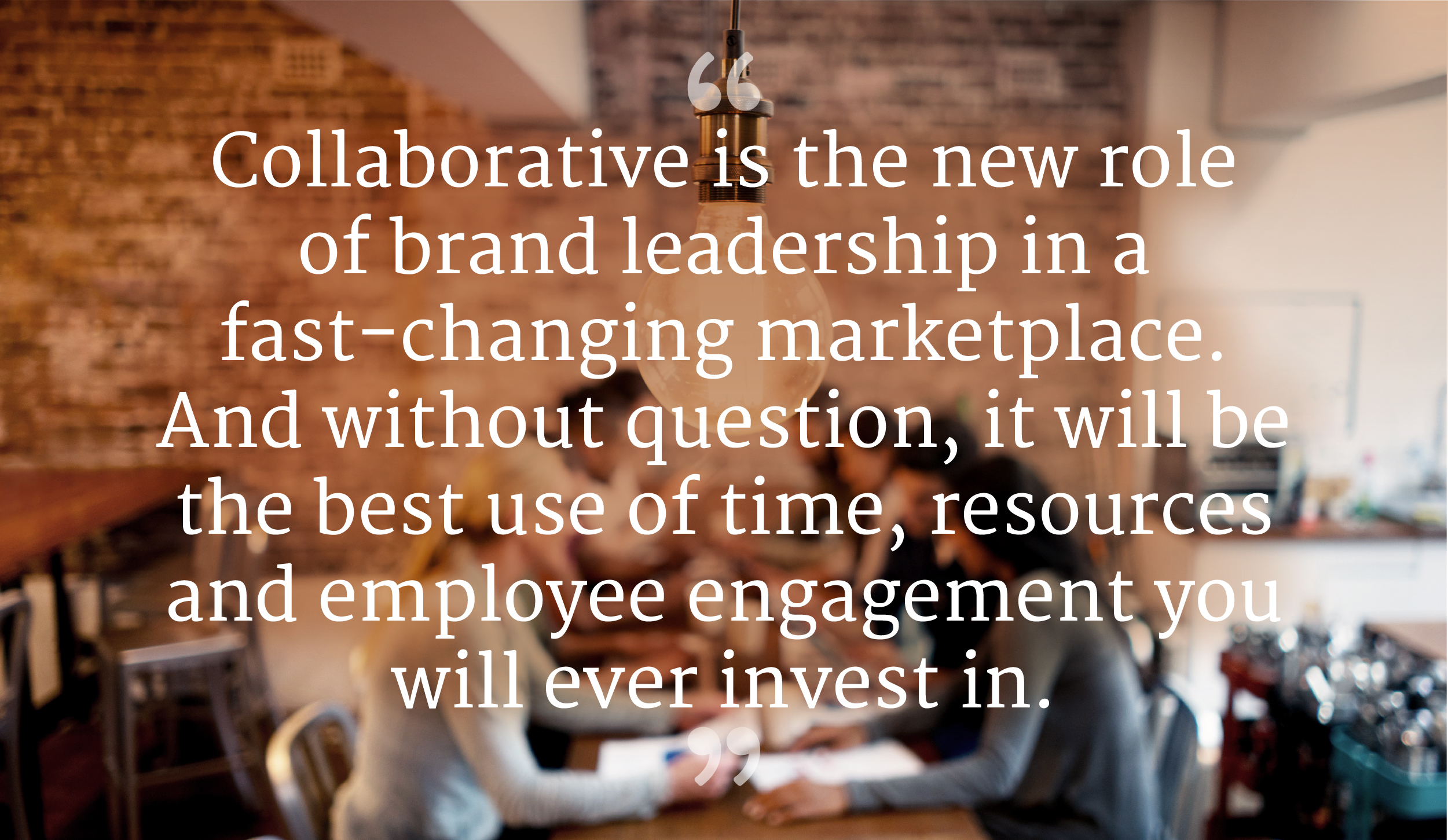The most powerful brands are building a new kind of relationship with customers.
When you think about brands in your life that you love, you see companies that are pursuing the same interests you care about.
If you look at your circle of friends, your closest colleagues at work, the people you associate with in your neighborhood, you’ll see something you may not expect: yourself. We are drawn to people who think like us, act like us, have the same interests as us because it helps create a sense of confidence in ourselves and our world. This basic human response is not just true with the people in our lives, but also with the brands we choose to bring into our lives.
Researchers have found that in almost every kind of relationship, individuals are drawn to those they perceive as similar to themselves.

Surrounding ourselves with those who share our beliefs is desirable for a good reason—it is useful and beneficial to our own interests.
How much of yourself do you see in brands like Tide, or AT&T? You may buy these brands—often and without much thought. But, what kind of connection do you feel with them or the companies behind them? Likely very little. Because all you really know about many of the brands you buy is the product or service they sell. Behind the product is a black hole of marketing and people and organization to which you have little access or insight. You don’t know if they are working in your best interests or just trying to get the next dollar out of you.
It’s time to tear down the third wall of branding
Now think about brands like Netflix, Target, Apple, and Fitbit—or any other brand you feel a real connection with. These brands don’t just portray an image you are attracted to. They represent a unique set of characteristics and beliefs that closely align with your own.
In 2011, outdoor apparel brand Patagonia launched an initiative called Common Threads, asking their customers to pledge alongside them to reduce their environmental footprint. It was a clear and emphatic statement about everything the company believes in, about the planet, about the adventurers they support, and about the company’s mandate to preserve the resources of our planet in every action and every product. Even if it meant, for Patagonia, selling fewer products out of respect for the greater good.
The effort struck a major chord with the brand’s ardent followers and generated some of the best sales in Patagonia’s history. How did a call to buy less result in more people wanting to connect with Patagonia? Because the statement reflected the shared responsibility that everyone in that community feels to protect nature, the planet, and the limited natural resources we are fortunate enough to have and explore.
This is not a brand that is pandering to an audience. And Patagonia is not randomly contributing to a popular cause. With Common Threads, Patagonia perfectly illustrated the powerful connection that can only come from a brand and a community that are in sync and working together to advance a shared interest. Patagonia has perfectly aligned their beliefs, vision, and actions as an organization – and as a culture – that looks, feels and acts just like the people who follow it.
This is why people see themselves in a brand like Patagonia in ways they can’t see themselves in a brand like AT&T. Patagonia and brands like it have torn down the “third wall” of branding. They are not just another brand competing for attention. They are an active participant in a community of people. They consistently communicate who they are as an organization, what they believe in and care about, what drives their actions, and what motivates their people. Patagonia’s openness, and more importantly, their consistent actions, are the reason they have been able to transcend the traditional brand relationship and create a truly inclusive partnership with their customers. Together, they are fighting the same fight, pursuing the same passions, and moving the world and their community forward.
This is not a traditional brand relationship, it’s something far more powerful: a relationship we call a collaborative.
Get clear on your brand’s reason to be
A collaborative is a relationship where the interests of an organization and its customers are fully aligned. Each has a vested interest in furthering their common beliefs. They support each other, indulge each other, and ultimately make each other better in the process.

You are drawn to collaborative brands for the same reason you are drawn to your friends and family. You see yourself in them—both who you are and who you wish to be. You are drawn to the products they make, their involvement in your community, and the potential they provide you.
There are two simple concepts behind the collaborative brand. One, collaborative brands have tightly aligned their passions, people, and beliefs with those of the communities they serve. And two, they are active participants in building and improving that community of people their products and services support.
These requirements don’t call for huge budgets, major ad campaigns, or radical brand refreshes. They do, however, require something that is far more difficult for brands to find: a clear, concise idea of who they are—as people, as a culture, and as an organization.
A study conducted by author and business consultant William Schiemann identified that on average less than 14% of employees within most companies understand the organization’s direction and vision. There’s a reason for this: companies are a complex amalgamation of leadership, people, opinions, perspectives, processes, history, politics, and a hundred other large and small elements. Not to mention that nothing in business is static: people come and go, new leaders bring new visions, organizational charts and hierarchies shift, new trends emerge, the competition gets tougher – all requiring regular adjustments in business strategy.
Leaders are left with a constantly shifting set of objectives, opportunities, challenges, and morale, on top of constant assaults from the competition.
Step one? Take a long look inside
There is a tendency for companies who struggle with the process of understanding themselves to instead look outward, to dive even deeper into understanding their customers. Leveraging more research, more data, more trends, and more technology to identify opportunities, engineer perceptions, and get even more from customers. This is what the world’s biggest brands do, so it must be effective, right?
Unfortunately, this one-sided view of the brand relationship is a significant reason we’ve seen iconic brands losing market share and relevance year after year. In 2016, revenues of the largest consumer brands grew at their slowest rate since the great recession of 2008. And things didn’t improve in 2017. According to a study by Bain and Company, 34 of the world’s 50 largest brands suffered from either lower sales or lower profit growth, or both.
So why isn’t the increased focus on determining what customers want making brands more relevant? There’s a very simple reason: knowing what the customer wants represents exactly one half of what is necessary to build a relationship. The other half is knowing and understanding what the brand has to offer the relationship.
Boston Consulting Group surveyed 2,500 American customers and found that being authentic was one of the main qualities that attract them to a brand. Customers buy from companies they believe in. And no customer can believe in a brand that doesn’t believe in itself. No brand can be authentic unless they have a clear sense of who they are. And all the customer research in the world will do nothing whatsoever to solve this.
Your most powerful business insight is within reach
Customers have an over-abundance of choice in every category, at every price point, at every level of quality, service or reputation. Virtually any product they choose will do the job, and do it well. So the choices customers make today are based on the next level of value: “what fits me, what feels right and what companies do I most believe in?”
Brands that want to do more than merely survive in this new marketplace need to turn the microscope on themselves. Thriving collaborative brands regularly focus their time, resources and research on understanding their own organizations. They ask themselves hard questions to find the common motivational threads that run from the top of the organization to the bottom and every point in between.
What collaborative brands find within their organizations are insights just as powerful – if not more so – than the insights found in customer research. These internal insights present an opportunity to build their brand’s belief system. This isn’t about creating another overblown corporate vision and values statement. Rather, collaborative brands identify the shared interests of their people, define their quantifiable attributes, and then create inspiring narratives and visual expressions that make the unique culture behind the products and services they offer relevant, accessible, and unmistakable in the hearts and minds of their people and the customers with whom they want to connect.
 As we know from every other relationship in our lives, know yourself first, and others will follow.
As we know from every other relationship in our lives, know yourself first, and others will follow.



